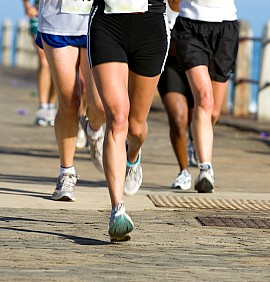5 Things You Can Do Now to Lower Your Blood Pressure
High blood pressure is a major risk factor for heart diseases, stroke, congestive heart failure, and kidney disease, according to the Centers for Disease Control and Prevention. Yet one in five Americans with the problem don’t know they have it. That’s in part because high blood pressure, or hypertension, might not cause any obvious symptoms. But if your blood pressure is high, finding out early and taking steps like the ones below to lower it can be a lifesaver. However, some people who have hypertension can’t get it under control without meds.
Go on the Dash Diet
DASH, or Dietary Approaches to Stop Hypertension, can be as effective as medication for some people with mild cases. The diet is low in fat (total and saturated) and rich in fruits, grains, vegetables, and low-fat dairy products. (For more info, search “DASH” at the National Institutes of Health website at www.nih.gov.)

Exercise
Do vigorous workouts at least 30 minutes a day on most days of the week.
Cut back on salt and sodium
Aim for a daily maximum of 2,300 milligrams of sodium, or 1 teaspoon of salt.
Drink moderately, if at all
Limit yourself to one alcoholic drink a day (two for men).
Lose Weight
If you’re overweight, try to lose enough to get your body mass index (BMI) to less than 25. To calculate BMI: Multiply your weight in pounds by 703, then divide by your height in inches squared.
What about vitamins and supplements? Fish oil, cod-liver oil. Coenzyme Q10, garlic, wheat bran, and pycnogenol (from pine bark) might help, but talk to your doctor about how much to take and whether supplements are right for you. Some can cause side effects, especially if you’re already taking blood-pressure drugs.
When to get it checked: Make sure your doctor checks your blood pressure at least every two years, more often if you’re overweight, 60 or older, African-American, or you have a family history of hypertension.
Take a better reading than your doctor
You’d think you’d get the most accurate blood-pressure reading at the doctor’s office, right? But consider how you feel after being whisked into an exam room, when you’re sitting there surrounded by latex gloves and needles, waiting. That anxiety can cause your pressure to spike higher than usual and even has a name: white-coat hypertension when you test yourself at home you eliminate that anxiety. Here’s how to get the most accurate reading:
Sit quietly. Remove any tight-fitting clothing or jewelry first. Then be sure to sit and relax for about 5 minutes before you take a reading.
Roll up your sleeve. Use a bare arm or wrist, and be sure the cuff is the proper size. Follow manufacturer’s instructions for the position of your arm.
Sit up straight, with your feet flat on the floor. And sit still; don’t laugh, talk, or move.
Record your reading and keep them with your monitor’s instruction booklet. For consistency, sit in the same place (away from cell phones and microwaves, which can affect accuracy) and use the same arm or wrist every time.

